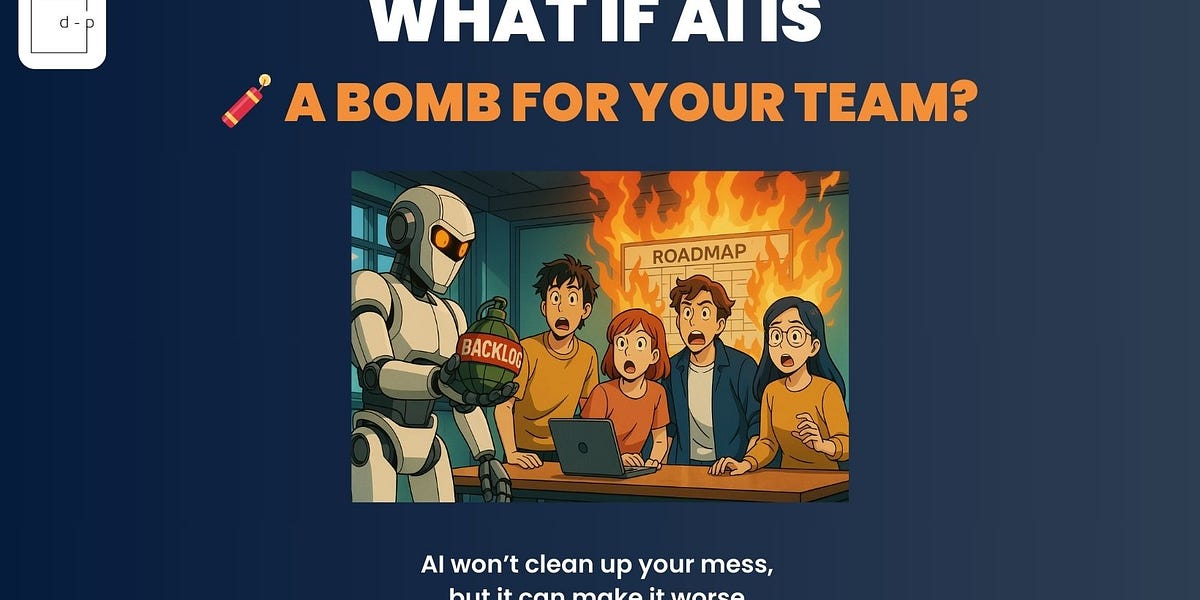- Sloth Bytes
- Posts
- 🦥 CI/CD For Dummies
🦥 CI/CD For Dummies


Hello friends!
Welcome to this week’s Sloth Bytes. I hope you had a weird week 😏
I messed up somethings, so if you see this again… whoops.

Let go of the clutter, distractions, and stress with Atono.
Atono is an all-in-one platform designed to help cross-functional teams build better software together.
Do more, juggle less: Bring roadmapping, story writing, feature flagging, bug reporting, and usage tracking together in one place.
A clean, focused experience: Minimalist UI with in-context tools ensuring everything is where you need it, when you need it. User stories at the center: Stories are first-class objects in Atono that highlight customer value, set clear goals, and keep your team aligned.
Early adopters can get six months free on Atono’s Business plan for up to 25 users when they sign up for a monthly plan using the code LessStressM25.

CI/CD For Dummies

CI/CD is a very useful thing to learn and any larger projects have these systems in place to prevent people (like you and me) from breaking production.
What is CI/CD?
CI/CD stands for:
Continuous Integration (CI)
Continuous Delivery/Deployment (CD)
Together it’s the process of automating your build, test, and deploy process.
Think of it like this:
Instead of you having to check, test, and then ship every time you update your code, you’ll have an automated process that does it all for you.
You write code → You push to GitHub → CI/CD pipeline starts → It checks it, tests it, and maybe even ships it for you.
CI/CD does the boring stuff, while you go back to being a code monkey.
🧠 CI (Continuous Integration)
Now the CI portion is all about what happens every time you or your team push code.
Usually the process does these actions:
Runs automated tests (unit, integration, linting, etc.)
Ensures all dependencies are installed correctly
Builds your app and checks for build errors (if needed)
Flags broken code before it’s merged
🚀 CD (Continuous Delivery/Deployment)
The CD portion is all about deploying your app.
Usually it does this:
Packages and builds your app (Docker images, ZIP bundles, etc.)
Pushes to staging or production environments
Triggers cloud deploys (like Vercel, AWS, Firebase, etc.)
Runs post-deploy tests (optional but very helpful)
Sends you or the team any messages when things go live (or break)
🧪 How To Implement CI/CD With GitHub Actions
Here’s how to get CI running in under 2 minutes:
Inside your repo, create this file: .github/workflows/ci.yml
Paste this in:
# This is a basic workflow to help you get started with Actions
name: CI
# Controls when the workflow will run
on:
# Triggers the workflow on push or pull request events but only for the "main" branch
push:
branches: [ "main" ]
pull_request:
branches: [ "main" ]
# Allows you to run this workflow manually from the Actions tab
workflow_dispatch:
# A workflow run is made up of one or more jobs that can run sequentially or in parallel
jobs:
# This workflow contains a single job called "build"
build:
# The type of runner that the job will run on
runs-on: ubuntu-latest
# Steps represent a sequence of tasks that will be executed as part of the job
steps:
# Checks-out your repository under $GITHUB_WORKSPACE, so your job can access it
- uses: actions/checkout@v4
# Runs a single command using the runners shell
- name: Run a one-line script
run: echo Hello, world!
# Runs a set of commands using the runners shell
- name: Run a multi-line script
run: |
echo Add other actions to build,
echo test, and deploy your project.
Now every time you commit and push to main. GitHub will auto-run this file on every push or PR.
If you want more examples with GitHub actions, github has a lot of templates (I stole this one from them lol)
There’s lots of other tools for CI/CD, but I’ll let you find that yourself 😉


Loving the feedback!



Thanks to everyone who submitted!
Kauketz, GabrielDornelas, bakzkndd, jw123450, xanerin, ariatheroyal, victorhugobarbosa, and E-Sieben.
Remove the Computer Virus
Your computer might have been infected by a virus! Create a function that finds the viruses in files and removes them from your computer.
Examples
removeVirus("PC Files: spotifysetup.exe, virus.exe, dog.jpg")
output = "PC Files: spotifysetup.exe, dog.jpg"
removeVirus("PC Files: antivirus.exe, cat.pdf, lethalmalware.exe, dangerousvirus.exe ")
output = "PC Files: antivirus.exe, cat.pdf"
removeVirus("PC Files: notvirus.exe, funnycat.gif")
output = "PC Files: notvirus.exe, funnycat.gif")Notes
Bad files will contain "virus" or "malware", but "antivirus" and "notvirus" will not be viruses.
Return
"PC Files: Empty"if there are no files left on the computer.
How To Submit Answers
Reply with
A link to your solution (github, twitter, personal blog, portfolio, replit, etc)
or if you’re on the web version leave a comment!
If you want to be mentioned here, I’d prefer if you sent a GitHub link or Replit!

New video is out!
I’m also giving out my notes for free!
Since you’re a Sloth Bytes subscriber, I’m giving away my notes about AI Agents!
I’m still working on them, so If any of my notes are wrong or you have suggestions let me know 😁
Another video coming out soon.
That’s all from me!
Have a great week, be safe, make good choices, and have fun coding.
If I made a mistake or you have any questions, feel free to comment below or reply to the email!
See you all next week.
What'd you think of today's email? |
Want to advertise in Sloth Bytes?
If your company is interested in reaching an audience of developers and programming enthusiasts, you may want to advertise with us here.








Reply